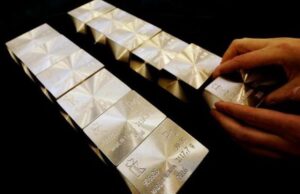
The world of precious metals is a fascinating study in economic dynamics, influenced by factors ranging from market sentiment to real-world events.
These metals, including gold, silver, and palladium, play crucial roles in industries and are integral to investment portfolios. Their prices are constantly affected by various economic indicators, geopolitical developments, and technological advancements, making them a dynamic and complex market to navigate.
Among the various ways to engage with these assets, gold CFD trading offers a unique opportunity to invest in the gold market without physically purchasing the metal. This article explores the diverse factors that influence the prices of precious metals, delving into economic indicators, geopolitical events, technological advancements, and mining outputs, each playing a significant role in shaping market prices.
Economic Indicators
Economic indicators are vital tools used by investors to gauge the health of the economy and predict future price movements of precious metals. These indicators include interest rates, inflation rates, economic growth measurements such as GDP, and employment figures. Precious metals are seen as hedges against inflation. Conversely, strong economic growth and increased interest rates can strengthen the local currency, potentially lowering the prices of these metals. Understanding these correlations is essential for anyone trading and investing in precious metals markets.
Geopolitical Events
Geopolitical events significantly impact the prices of precious metals. These events can include wars, elections, economic sanctions, and changes in government policies. For instance, investors often turn to gold as a ‘haven’ investment during political instability or conflict, driving up its price. Gold CFD trading can be particularly volatile during such times, as traders and investors react swiftly to news and developments. Sanctions or trade restrictions on a country that is a significant producer of precious metals can disrupt supply chains, leading to price increases due to scarcity concerns.
Technological Advancements
The influence of technological advancements on precious metals prices cannot be understated. Innovations in mining technology can significantly reduce the cost of extraction and processing, potentially increasing the supply of metals and affecting prices. On the other hand, new uses for precious metals in technology, such as silver in solar panels or palladium in catalytic converters, can drive up demand and prices. The advent of recycling technologies also plays a role, as increased recycling can supplement new mining supplies, possibly stabilizing prices.
Mining Outputs
Mining outputs directly affect the supply side of precious metals prices. The volume of metal that mines produce can vary due to various issues, from labor strikes and regulatory changes to natural disasters. Any reduction in output can lead to higher prices due to the scarcity of the metal. Conversely, prices might drop if new mines are opened or existing ones are expanded, and the market becomes oversupplied. For metals like platinum and palladium, which have high production in a few countries, any change in output can dramatically affect global prices.
Market Demand and Investment Trends
The final key factor is market demand and investment trends, which play pivotal roles in determining the prices of precious metals. Demand from jewelry, electronics, and manufacturing directly influences metal prices. Investment demand is equally crucial, especially for metals like gold and silver, popular components of investment portfolios. Trends in investment, such as increased buying during economic uncertainty or selling during market highs, can cause significant price fluctuations.
Currency Fluctuations on Precious Metal Prices
Currency fluctuations are a critical yet often overlooked, factor that significantly influences the prices of precious metals on the global market. Precious metals are typically priced in U.S. dollars, and thus, the dollar’s strength or weakness directly impacts metal prices. When the dollar weakens against other major currencies, precious metals priced in dollars become cheaper for investors holding other currencies, increasing demand and prices. Conversely, when the dollar strengthens, precious metals become more expensive for non-dollar investors, potentially leading to decreased demand and lower prices.
This dynamic is relevant in the context of global economic shifts and central bank policies. For instance, when central banks in major economies implement policies that devalue their currencies, it can increase precious metal prices. Traders and investors often monitor currency markets closely to predict shifts in metal pricing based on anticipated changes in U.S. monetary policy or significant economic indicators that might affect the dollar.
Understanding the relationship between currency valuations and precious metal prices can give traders, including those engaged in gold CFD trading, a strategic advantage. By analyzing currency trends, traders can anticipate potential price movements in metals and position their investments to capitalize on these fluctuations, enhancing their trading strategies and potentially increasing returns.
The prices of metals are influenced by a complex interplay of factors that make trading and investing in these commodities a dynamic challenge. From economic indicators that reflect broader economic conditions to geopolitical events that prompt immediate market responses, understanding these factors is crucial for anyone engaged in precious metals markets. Technological advancements and mining outputs also play critical roles in shaping supply and demand dynamics. By staying informed about these influences, participants in the precious metals market can make more educated decisions, whether directly trading metals or using financial instruments like CFDs.
